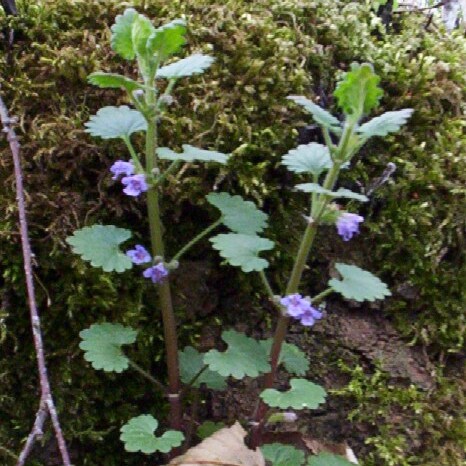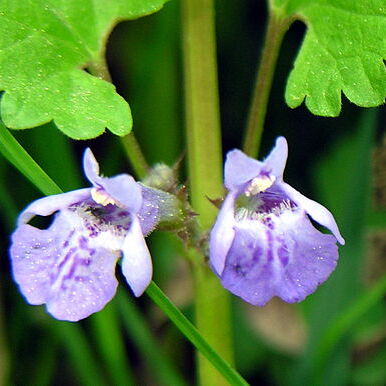Cal 15-nerved, slightly oblique at the throat, unequally 5-toothed, the midnerve of each tooth excurrent into a short awn; cor 2-lipped, the upper lip somewhat concave, 2-lobed, the lower lip spreading, with a large central lobe and smaller lateral ones; stamens 4, the upper pair the longer, normally ascending under the upper lip and scarcely exserted; pollen-sacs set end to end along one side of the filament just below its summit (which commonly surpasses the upper pollen-sac), divergent at a wide angle; opening by separate slits; creeping perennials with long-petioled, rotund or reniform lvs and small or medium-sized, short-pediceled, blue fls usually 3 per axil. 10, temp. Eurasia.
Perennial herbs, usually with creeping non-flowering stems and ascending flowering stems. Lvs simple, reniform to ± orbicular, toothed. Verticels 2-5-flowered, axillary, secund. Bracts resembling ordinary lvs. Calyx tubular or tubular-campanulate, 15-veined, not gibbous at base, somewhat 2-lipped, with an upper lip of 3 teeth and a lower of 2. Corolla 2-lipped; tube straight, widened towards apex; upper lip flat, subentire or with 2 teeth; lower lip of 3 teeth, hairy towards base. Stamens lying below upper lip; anther cells at right angles to each other. Style gynobasic, its branches equal. Nutlets smooth, ± obovoid.


